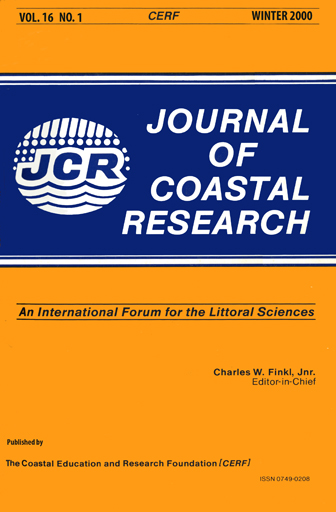The Sharon Escarpment (Mediterranean Coast, Israel): Stability, Dynamics, Risks and Environmental Management
Keywords:
Israel, Mediterranean coast, Sharon Escarpment, eolianite, kurkar, rock sliding, environmental risk, beach management, cliff retreatAbstract
The Sharon Escarpment between Giv'at Olga and Tel Aviv connects two regional land levels: the Coastal Plain, and the level of the Mediterranean beach and continental shelf, both of which consist of shore-parallel eolianite (kurkar) ridges and intervening troughs. The escarpment is up to 45 m high and is 75-90° steep. It terminates the westernmost coastal ridge along its seaward side, parallel to the ridge crest. The seaward face exposes two layers of crossbedded eolianite topped by paleosols, and it is usually capped by a 1-3 m ledge of hard calcarenite. Over the years, the escarpment moves evenly eastward by discontinuous collapse and slumping on the seaward side. Slabs of friable sandstone, commonly about 2 m thick and several meters long, become separated from the face of the cliff along tensional fissures. As they slide downward they crumble almost completely and come to rest as 30-55° aprons of loose sand which are removed in seasonal stages by wave swash. No further rockslides occur as long as this talus protects the cliffs foot. The frequency of rockslides, averaged over several years and along the entire length of the escarpment, is uniform and independent of cliff height or differential rock properties.
The escarpment's catchment area is small but steep, and runoff erodes deep primary gullies. Down washed sand collects in low-angle fans in front of the talus and is removed with it by wave swash. Even though erosion causes visible degradation (especially where connected to more inland systems and to artificial catchments, where it causes great damage), the volume of sediment thus removed from the escarpment is negligible compared to the volumes removed by slumps and rockslides, and this erosion by runoff scarcely influences the rate of cliff retreat.
Talus-free sections along the escarpment, where the next expected event is a rockfall, were defined as Risk A sections. Sandslides from wave-cut talus aprons mainly involve horizontal mass distribution (including blocks of detached calcarenite that ride atop the talus), and these sections were defined as Risk B. Non-truncated talus was defined as Risk C (no event expected before the onset of sand removal).
A slump cycle starts from the Risk A situation. After a rockfall, a Risk C situation is obtained which through a sequence of B-C-B-C events, becomes Risk A. According to observational estimates over the last decade, Risk C lasts 1 to 2 years, Risk B several years, and Risk A up to 10 years and possibly more. The rate of retreat for the total escarpment is constrained by the overall strength of the cliff and by the wave climate (i.e. the frequency of beach clearance of all talus). The rate of retreat is not perturbed by cliff height, by cliff angle or by cliff-top activity, as claimed by some authors, although one-time events may have a temporary or local effect on the short-range rate of retreat.
The Sharon Escarpment provides environmental benefits which may be irreversibly damaged by road building, sand quarrying, uncontrolled drainage, slope grading, and general tampering with the topography. The effects of such tampering are described and evaluated, and guidelines for durable cliff maintenance are recommended.


